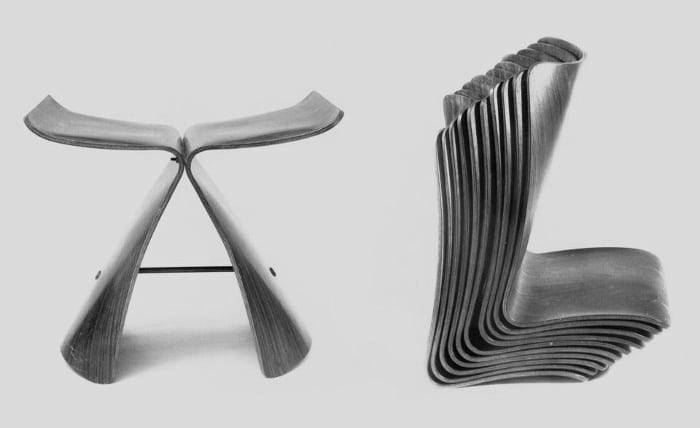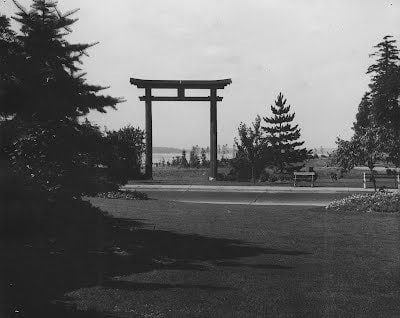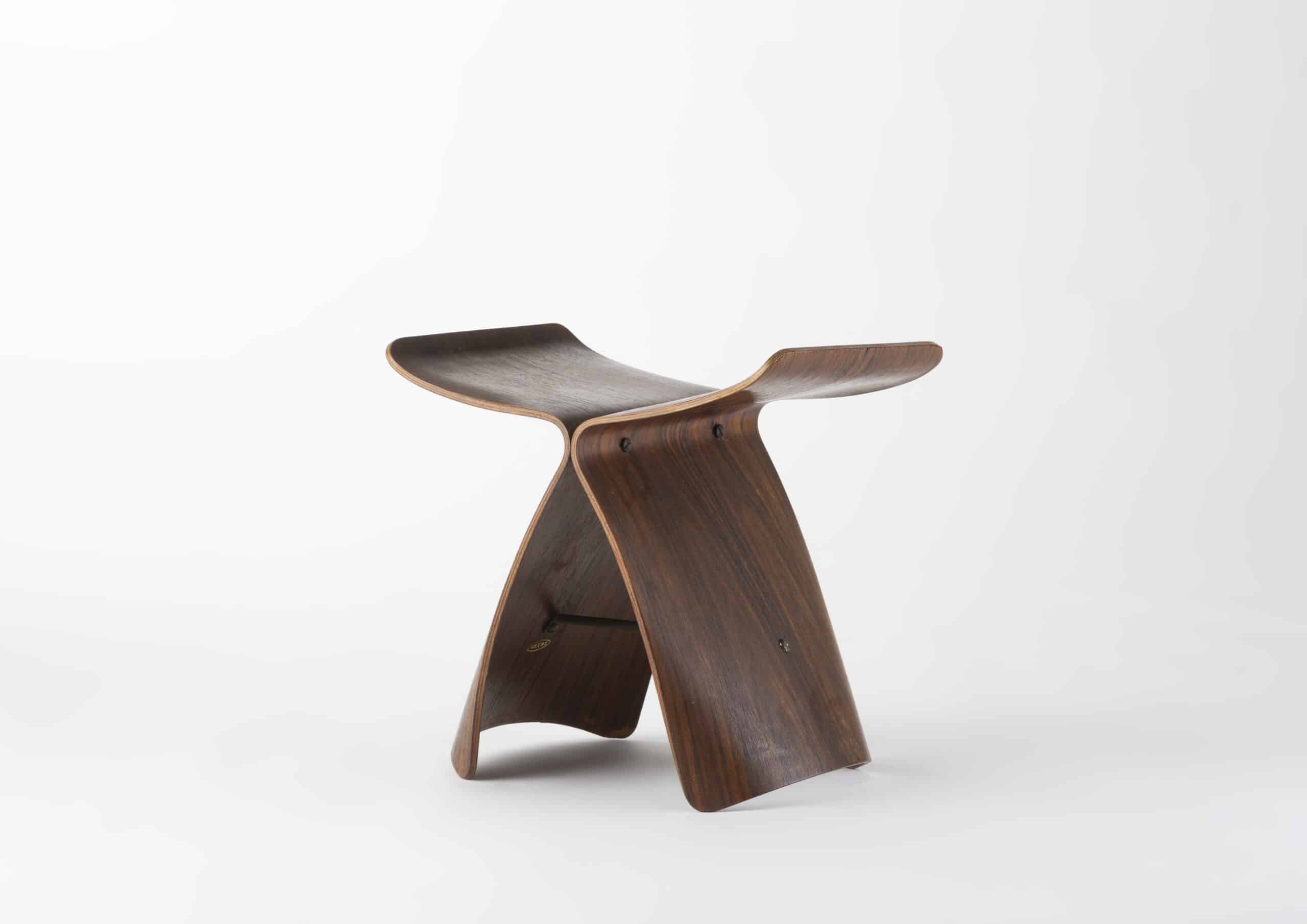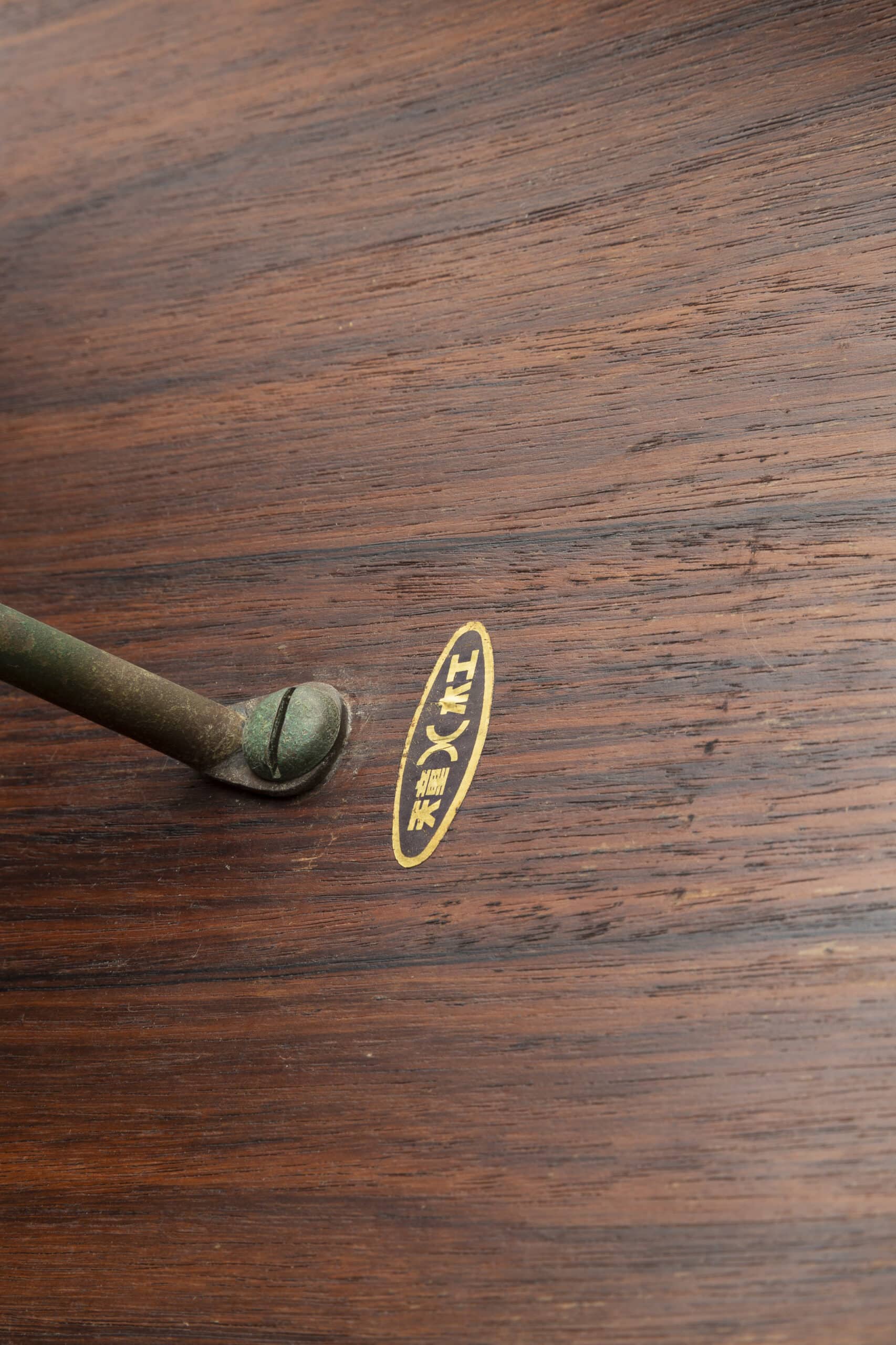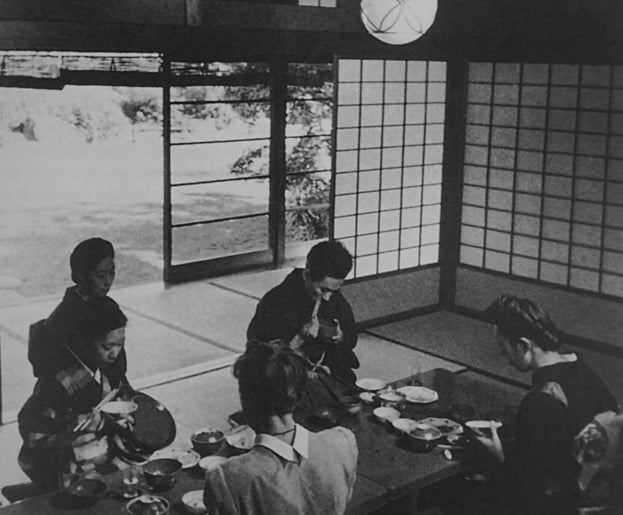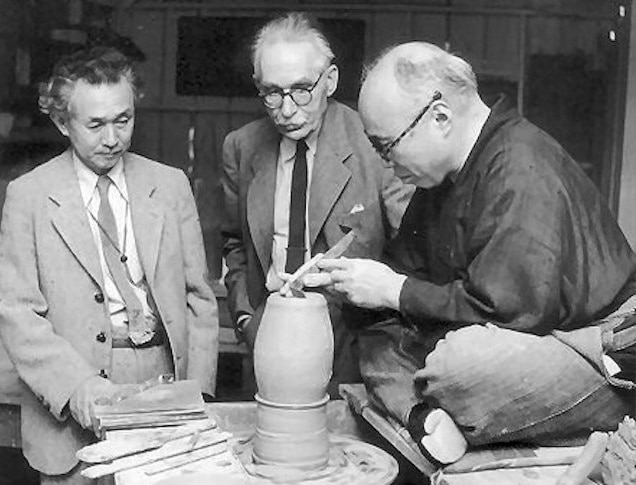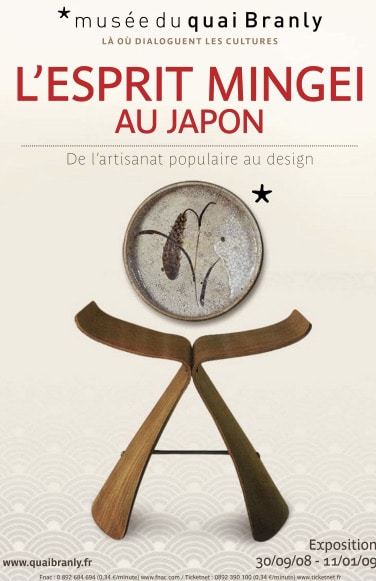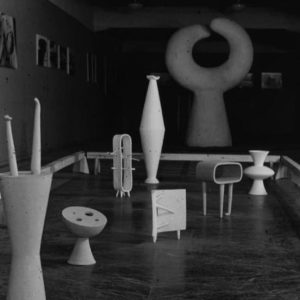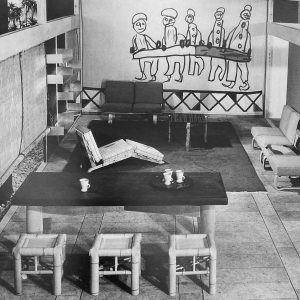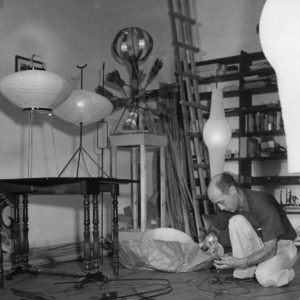A two-headed stool
Created in 1954, the “Butterfly” stool is composed of two thin sheets of molded plywood perfectly identical, connected by a brass rod ensuring support, stability and strength to the whole. It is manufactured and produced by the Japanese editor Tendo Mokko, specialized in plywood furniture. Its name comes from the shape of its twin parts facing each other, reminding the shape of a butterfly’s wings. But the references don’t stop there: indeed its general aspect is obviously inspired by torii, these gates marking the entrance of Shinto temples, but also by some Japanese ideograms, kanji. Far from being just a beautiful object inspired by nature, it is the historical paragon of the two-headed nature of Japanese design after World War II.
After their defeat, Japan territory was dominated by American forces, both physically and theoretically: the presence of GIs and the diffusion of American Way of Life reach all the levels of society with objects and new techniques. A new lifestyle settled up into the local culture, giving rise to new practices. Progressively introduced since the 19th century, the western style of seating is strongly appeared in the interiors and the “Butterfly” stool is a very good example. Its material is a good symptom of its polymorphism. Charles (1907-1978) and Ray (1912-1988) Eames developed plywood for military purposes and then applied it to their furniture after the war: the technique was exported and continued to improve, from Denmark (see for example the “Shell” armchair by Grete Jalk made by P. Jeppesen, 1963) to Japan.
The “Butterfly” is a two-headed stool : it takes advantage from the technological advances of a victorious West with its materials and its function in one hand; in an other hand, its form and its manufacture are perfectly Japanese, a tribute to the country history as much philosophical as aesthetic. Sori Yanagi synthesizes the ideals of the post-war period: his stool – and more generally his creations – is a link between industrial design and Japanese craftsmanship, a reflection of her own history.
The reflection of Sori Yanagi
Sori Yanagi is one of the most important Japanese designers of his generation, at the forefront of two major design trends.
Sori Yanagi was the assistant of Charlotte Perriand (1903-1999) during her first visit to Japan in 1940: he followed the French designer in her conferences, visits and exhibitions, he listened to the advice she passed on to a whole generation of designers, craftsmen and manufacturers. She spread the good word of industrial design and functionalism, insisting that their Japanese identity, their know-how and their signature never be betrayed. In 1952, Sori Yanagi was one the founder member of the Japan Industrial Designer Association. Following the precepts of his mentor, each of his creations is an intelligent integration of international contemporary innovations and Japanese ancestral models.
The other side of the spectrum is the Mingei movement, launched in the 1920s, partially in reaction to industrialization, by his father, the philosopher and art critic Soetsu Yanagi (1889-1961) and the potters Shoji Hamada (1894-1978) and Kanjiro Kawai (1890-1966): they defended a return to traditional craftsmanship and valuing everyday objects designed by humans. This movement is very successful and powerful: Sori Yanagi is very sensitive to it. The form of the “Butterfly” stool is an ode to Japanese culture, close to some ideas of Mingei at a certain level; proof is, the poster of the exhibition “L’esprit Mingei au Japon” at the Musée du quai Branly – Jacques Chirac in 2008, proudly displayed an exemplar. “True beauty is not made, it is born naturally”, as the designer said.
The “Butterfly” stool is an hybrid seat: it is a reflection of a major political and social moment but never betrays its Japanese origins. Sori Yanagi has succeeded in creating a new path, synthesizing the contribution of two different fields. His design is worldwide distributed and for over 70 years in plenty of interiors but also exhibited in prestigious museums, from MoMA (New York) to MAD (Paris).
